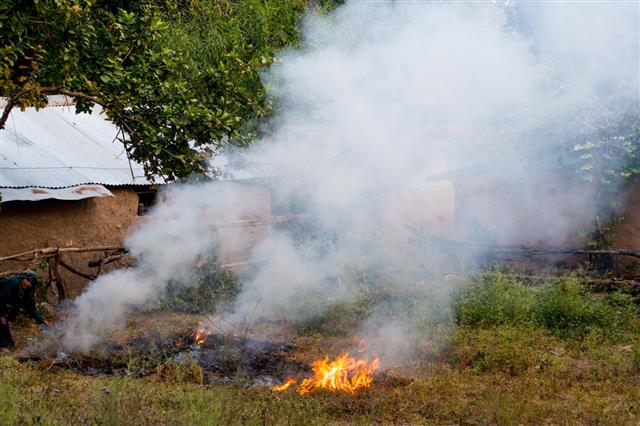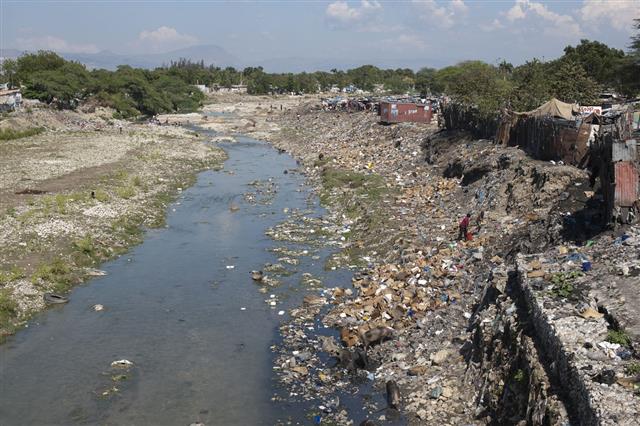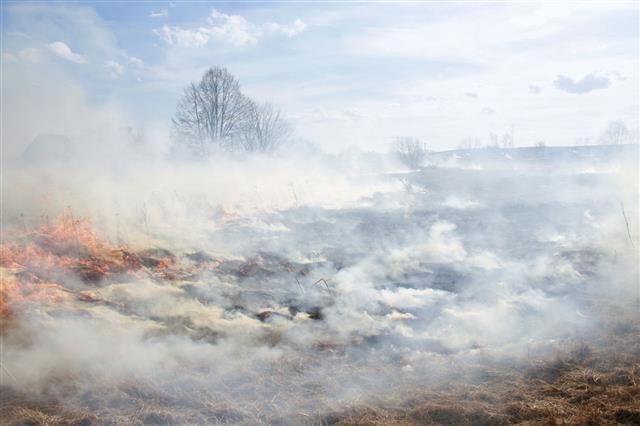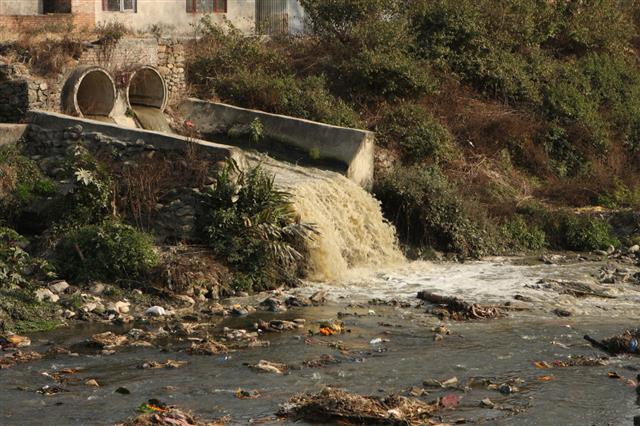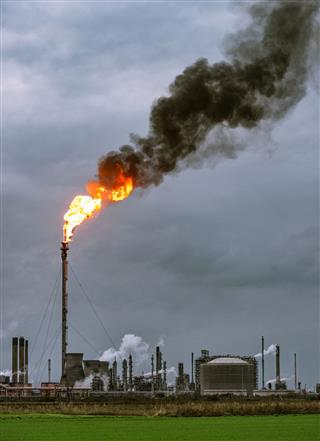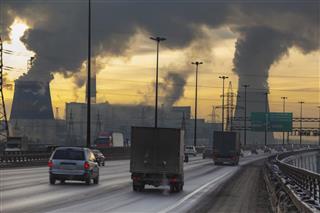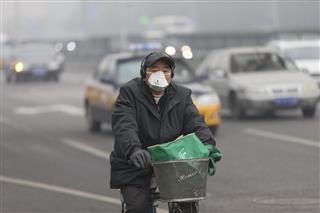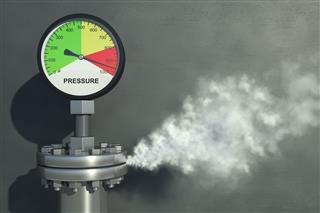
As seen in most cases, one of the first symptoms of methane gas exposure is headache. To know about the other symptoms, here is an article for your reference.
Methane is a simple alkaline compound, which is an important part of natural gas. Its chemical formula is CH4 and it is a colorless and odorless gas. Methane burned in the presence of oxygen produces water and carbon dioxide. The symptoms of methane gas exposure are not seen, as soon as the person comes in contact with the gas. The symptoms take certain amount of time before they are seen, as methane is less dense than air.
What Indicates Exposure to Methane Gas?
Headaches may be triggered by getting exposed to methane gas. This sign was also observed in the school in Texas, where a methane gas blast killed about 300 students and faculty members.
Exposure to high levels of methane gas depletes the oxygen level in the body, causing difficulty in breathing and suffocation.
If the oxygen level in the body depletes to anything less than 12%, the person can become unconscious and prove to be lethal in some cases.
Since the levels of oxygen in the body depletes, the body tries to make it up by using the oxygen contained in the bodily fluids. This basically leads to dehydration.
Nausea and vomiting are also methane gas poisoning symptoms. There are chances that a person can collapse due to exposure to methane gas.
Another symptom is heart palpitations. It causes an uncomfortable sensation of the heart beating rapidly, abnormally and out of sequence.
Due to the depletion of oxygen in the body, it gives rise to cognitive problems. The person is inattentive, has memory loss and poor judgment. These symptoms aggravate, when the exposure to this gas is more.
Exposure to methane gas also causes dizziness and blurred vision. This symptom reduces, when the person moves away from the area that is high in methane gas concentration.
It also causes lack of motor coordination. Even in the most familiar surroundings, the person will knock things around. There are chances, that the person will drop things he has picked up, more often.
Some patients also display flu-like symptoms. The patient may also experience mental uneasiness and lethargy.
If methane gas is burnt and there is paucity of air, carbon monoxide will be produced. If carbon monoxide is produced in large quantities, it can prove to be fatal for the person.
Some Basic Information
There are three ways in which a person can be exposed to methane gas. The first of them is inhalation. Methane gas can be inhaled when it enters our homes or office building. It can enter our homes through cracks in the foundations of the building or through sewer traps if the house or office is built on or near landfills. The chances of inhalation increase when we unknowingly pass by closed septic tanks, sewers or farm waste pits. You should look around in your surroundings and be aware, as there are chances that you may be unknowingly producing and inhaling methane gas. Along with sewers, the other areas where methane gas production may take place are rotting food in the kitchen, compost piles outside a window, potting soil in a plastic bag and exposure via waste water treatment plants.
The other possible way of exposure to methane gas is through ingestion. This is however, a rare possibility, but one that cannot be ruled out totally. Naturally created methane gas can find its way into the natural water reservoirs, but it is known to evaporate fast as well. A child can ingest methane gas, if he eats dirt that has traces of methane in it. The level of exposure caused by ingestion is very low and there are no known side effects of it on the body. It is very unlikely that methane gas will enter your body through touch, as methane finds it difficult to penetrate through the skin. However, for when it does, it is thrown out of the body either through respiration or through urine.
As you can see from the above description, the methane exposure symptoms could easily mimic those of other medical conditions. Therefore, you will have to get yourself examined from a medical practitioner to diagnose, what the problem exactly is. If a person has identified himself with methane gas exposure symptoms, the only way to escape with minimal damage is to rush to a nearby hospital without causing any delay. The person will have to be put on an immediate supply of oxygen using a life support mask. The person may also have to be put on an intravenous drip in order to avoid any further dehydration. To prevent the formation of methane gas at home, it is necessary that your house and office buildings are well ventilated.
Disclaimer: The information provided in this article is solely for educating the reader. It is not intended to be a substitute for the advice of a medical expert.
